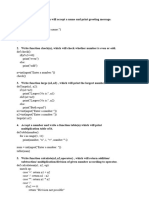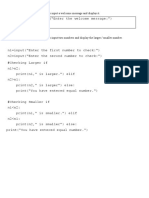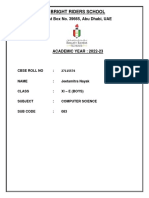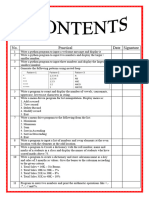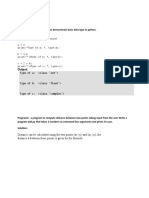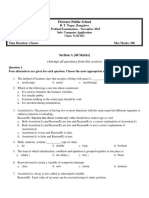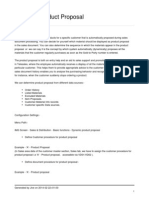0% found this document useful (0 votes)
49 views12 pagesPractical Programs Class 11
The document provides a series of Python programming exercises, each with a specific task such as displaying a welcome message, finding larger/smaller numbers, checking for prime numbers, generating Fibonacci series, computing GCD and LCM, analyzing string characteristics, checking for palindromes, swapping list elements, searching elements in tuples, displaying student names based on marks, generating patterns, sorting names, calculating factorials, generating random numbers, and summing a series. Each exercise includes a program definition, sample output, and the corresponding Python code. The exercises are designed to help users practice and enhance their Python programming skills.
Uploaded by
andersonisidorerCopyright
© © All Rights Reserved
We take content rights seriously. If you suspect this is your content, claim it here.
Available Formats
Download as DOCX, PDF, TXT or read online on Scribd
0% found this document useful (0 votes)
49 views12 pagesPractical Programs Class 11
The document provides a series of Python programming exercises, each with a specific task such as displaying a welcome message, finding larger/smaller numbers, checking for prime numbers, generating Fibonacci series, computing GCD and LCM, analyzing string characteristics, checking for palindromes, swapping list elements, searching elements in tuples, displaying student names based on marks, generating patterns, sorting names, calculating factorials, generating random numbers, and summing a series. Each exercise includes a program definition, sample output, and the corresponding Python code. The exercises are designed to help users practice and enhance their Python programming skills.
Uploaded by
andersonisidorerCopyright
© © All Rights Reserved
We take content rights seriously. If you suspect this is your content, claim it here.
Available Formats
Download as DOCX, PDF, TXT or read online on Scribd
/ 12




